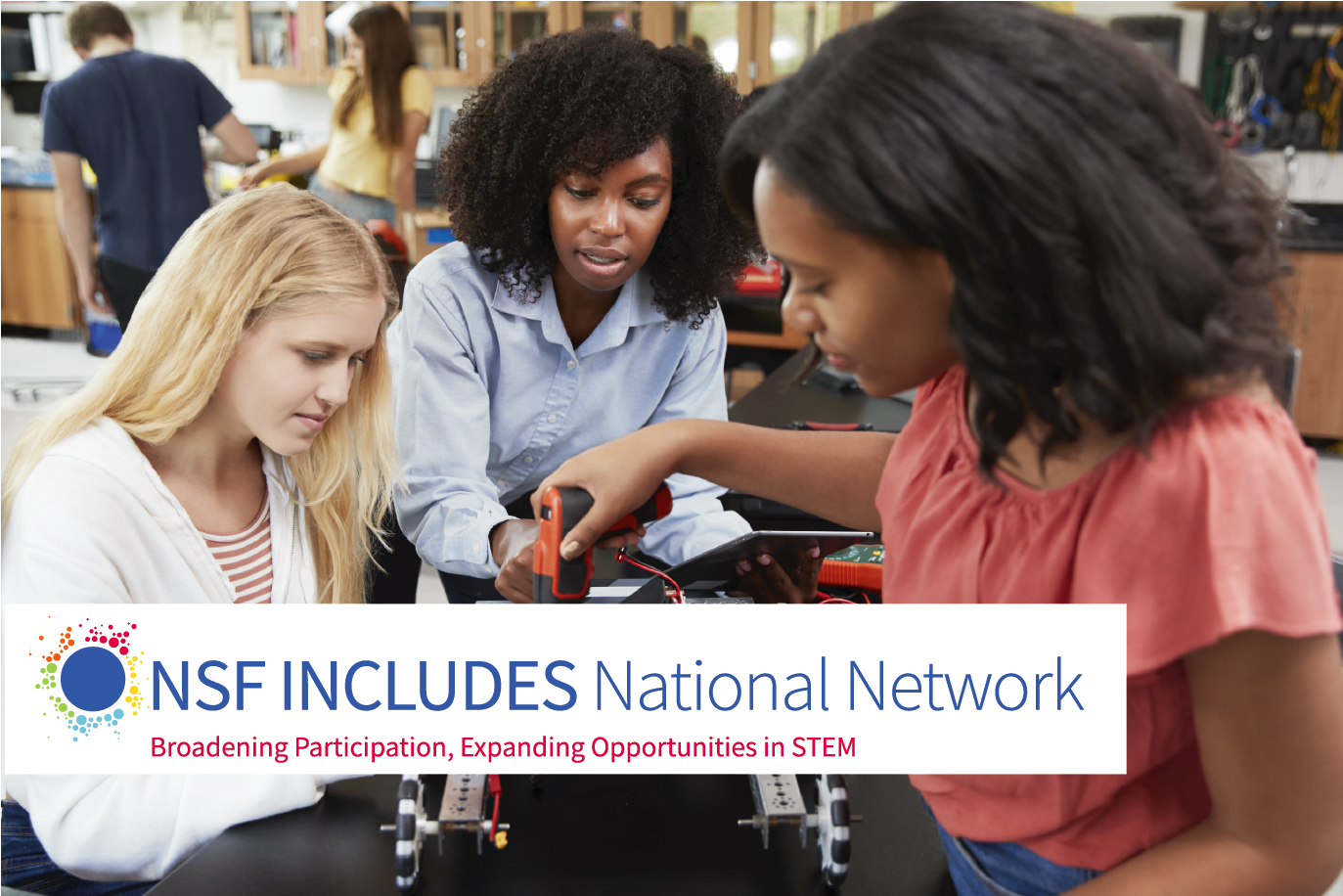by Daniela Saucedo, Mercy Mugo
March 16, 2021

Repost of an April 13, 2020 post from the NSF INCLUDES National Network Blog. NSF INCLUDES (Inclusion Across the Nation of Communities of Learners of Underrepresented Discoverers in Engineering and Science) is a comprehensive national initiative designed to enhance U.S. leadership in discoveries and innovations by focusing on diversity, inclusion and broadening participation in Science, Technology, Engineering and Mathematics (STEM) at scale.
Marginalized racial and ethnic groups continue to be underrepresented in science and engineering fields (NSF, 2019). To address these persistent disparities, it is critical to develop and implement strategies that attract and retain Black or African American, Hispanic or Latino, American Indian, Native Hawaiian, Alaskan Native, and other Pacific Islander students and professionals in STEM.
We are pleased to share the Evidence-based Strategies for Improving Equity and Inclusion of Individuals in Underrepresented Racial and Ethnic Groups, the first research brief from the NSF INCLUDES Coordination Hub team. The brief explores promising practices for broadening participation among racial/ethnic minorities in STEM and features the following evidence-based strategies:
- Culturally responsive pedagogical practices—the practice of infusing cultural knowledge and context into STEM teaching to help students see the connections between the scientific concepts they are learning and their lived experiences;
- Family support—engaging family members to encourage and support students to enter and stay in STEM educational experiences;
- Hands-on learning—experiential learning in which students are accorded the opportunity to manipulate things they are studying, gaining knowledge through first-hand experience;
- Summer bridge programs—programs offering academic and social support to ease the transition of underrepresented groups into college;
- Research experiences—undergraduate students’ immersion in meaningful research experiences, which is often associated with increased interest in STEM careers;
- Counterspaces/safe spaces—intentionally creating alternative spaces within central academic spaces for underrepresented groups to interact and engage in activities that promote feelings of belonging in STEM; and
- Mentoring—the process by which more experienced researchers guide, advise, and establish long-term relationships that benefit a mentee’s educational and career development.
Key Takeaways
The strategies described above are used across STEM fields and have provided considerable evidence for positive results for students. We note additional approaches may support program success such as: adapting for local needs, maximizing the role and value of partnerships, and implementing multifaceted interventions. We have been discussing these topics in the online community and would love to hear from you! Please share your thoughts on the “importance of mentoring and family support,” or the “power of culturally responsive pedagogical practices and counterspaces,” or “using hands-on learning, summer bridge programs and research experiences.”
You can access the full research brief here. This is the first in a series of research briefs produced by the NSF INCLUDES Coordination Hub, with more to come. Join the INCLUDES National Network at www.includesnetwork.org to connect with members and to access other resources that support efforts to expand participation in STEM learning and careers. If you have stories to tell about using any of these strategies, or if there are any other strategies for broadening participation that you would recommend, let us know in the comments below!
Topics: Access and equity STEM and computer science pathways Students of color
